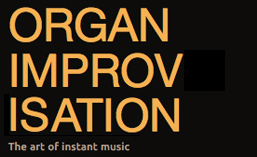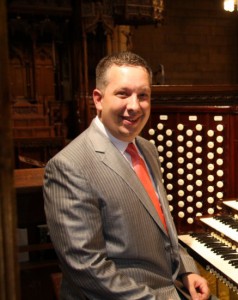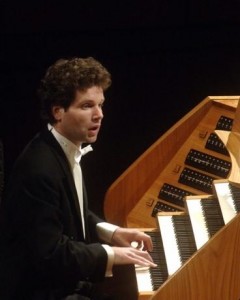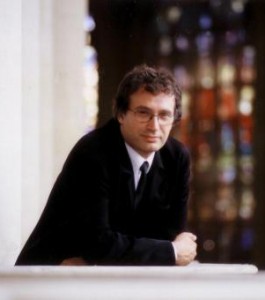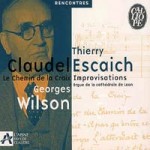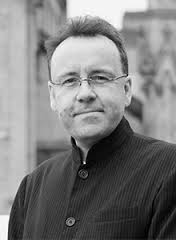For many years the pipe organ was used to provide accompaniment for films. The American Theatre Organ Society exists to help preserve and perpetuate the musical theatre pipe organ heritage that began in the early 20th century. Because the number of theatre organs has been greatly reduced, classically trained improvisers have started to accompany films on traditional church organs as one way to preserve and continue the art form. While film accompaniment may not require the contrapuntal skills to create a fugue, it poses other challenging demands for the improviser. Depending upon the movie, there can be long tension builds, sudden shifts of mood, and even the need to create a few sound effects. As an effort to catalog or discuss film accompaniment on the organ could be the focus of a whole other website, I have chosen to list below those organists already included here that also accompany silent films on a regular basis along with examples where available.
David Briggs
Scenes from The Phantom of the Opera
Thierry Escaich
Final Scene from ‘The Phantom of the Opera’ (Piano)
Freder’s Nightmare from Metropolis by Fritz Lang
Final Scene of Metropolis by Fritz Lang
Peter Krasinski
How Peter Krasinski Approaches Accompaniment
Baptiste-Florian Marle-Ouvrard
20.000 lieues sous les mers (Georges Méliès)
The Kid (Charlie Chaplin)
Dorothy Papadakos
often accompanies the silent films of Charlie Chaplin, Buster Keaton & Harold Lloyd.
Pierre Pincemaille
Pierre Pincemaille – the film FAUST of MURNAU – Saint-Ouen de Rouen
Mathias Rehfeldt
Nosferatu (1922) – Full Movie
Timothy Tikker
The King of Kings (The Criterion Collection)
Timothy Tikker provides organ accompaniment for the 1931 version of the film included in this DVD.
Todd Wilson
Chandelier Falls from Phantom of the Opera
Book:
Musical Accompaniment of Moving Pictures
A Practical Manual for Pianists and Organists, and an Exposition of the Principles Underlying the Musical Interpretation of Moving Pictures
by Edith Lang and George West
Available through Forgotten Books or Amazon.
The Silent Film Sound & Music Archive also offers a free download of the above title as well as several other instruction books for movie accompaniment.
